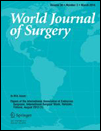Utilization and Impact of Repeat Biopsy for Follicular Lesion/Atypia of Undetermined Significance
Abstract
Background
The Bethesda System for Reporting Thyroid Cytopathology (BSRTC) created a new diagnostic category, follicular lesion/atypia of undetermined significance (FLUS/AUS). The recommended management of FLUS/AUS lesions is repeat biopsy to re-classify the lesion and guide therapy. Prior surgical studies suggest a higher than expected malignancy rate for FLUS/AUS. The present study evaluates a large institutional experience with all FLUS/AUS lesions analyzing use and impact of repeat biopsy.
Methods
A total of 322 patients with FLUS/AUS cytology have been retrospectively identified since adoption of the BSRTC (2/2009–6/2012). Patient demographics, the results of clinical follow-up, repeat biopsy, or surgical pathology results were evaluated.
Results
Among the 322 patients, 16 had concurrent cytology of higher acuity and were excluded. For the remaining 306 patients, 101 (33 %) underwent repeat biopsy, yielding 49 (48.5 %) with FLUS/AUS, 43 (42.5 %) with benign cytology, and 9 (9 %) with higher acuity cytology. Among the 205 patients without repeat biopsy, 117 (57 %) chose thyroidectomy, and 88 (43 %) are being observed. Overall, 170/306 (55.6 %) patients underwent surgery to remove the index lesion, yielding a malignancy rate of 16.5 %. In contrast, the malignancy rate for the entire cohort was 28/306 (9 %).
Conclusions
Repeat biopsy was underutilized in FLUS/AUS cases. Repeat biopsy allows a significant proportion of FLUS/AUS patients without other indications for surgery to move to surveillance. In patients who have indications for thyroidectomy regardless of FLUS/AUS results, repeat biopsy does not appear necessary. Malignancy and thyroidectomy rates were similar among patients who did or did not have a repeat biopsy. Further data must be obtained to determine the long-term outcomes for surveillance of FLUS/AUS lesions in patients who do not undergo surgical removal.




